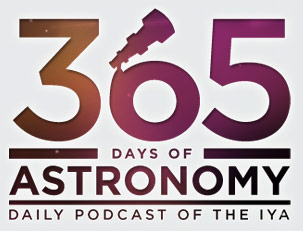NEW PODCAST: Quasars in Galaxy Clusters! May 19, 2011
Posted by jcconwell in Black Holes, Podcast, Quasars.Tags: 365 days of astronomy, AGN, Black Hole, blackholes, Eastern Illinois University, EIU, Podcast, Quasars
add a comment
http://365daysofastronomy.org/2011/05/17/may-17th-big-black-holes/
Description: Quasars are some of the most luminous objects in the universe. Quasars are ancient galaxies that harbor massive black holes at their centers. The black holes emit huge amounts of energy across the spectrum as they consume matter. In this podcast, Dara Norman discusses her research on how quasars interact with their environment. Many quasars occur in galaxy clusters which can play a role in turning on quasars as well as their evolution.
Bio: Dr. Dara Norman is a research astronomer at the NOAO. Her research interests are in the area of Active Galactic Nuclei, including Quasars, and their cluster environments, in particular the triggering of AGN, and their influence on galactic evolution. She is also interested in how Quasars can be used to understand large-scale structure in the universe.
GAMMA RAY ERUPTION IN THE CRAB NEBULA May 11, 2011
Posted by jcconwell in Astronomy, Neutron Stars.Tags: Crab Nebula, Gamma Ray Eruption, neutron star
add a comment
WASHINGTON (NASA) — The famous Crab Nebula supernova remnant has erupted in an enormous flare five times more powerful than any flare previously seen from the object. On April 12, NASA’s Fermi Gamma-ray Space Telescope first detected the outburst, which lasted six days.
The nebula is the wreckage of an exploded star that emitted light which reached Earth in the year 1054. It is located 6,500 light-years away in the constellation Taurus. At the heart of an expanding gas cloud lies what is left of the original star’s core, a superdense neutron star that spins 30 times a second. With each rotation, the star swings intense beams of radiation toward Earth, creating the pulsed emission characteristic of spinning neutron stars (also known as pulsars).
Apart from these pulses, astrophysicists believed the Crab Nebula was a virtually constant source of high-energy radiation. But in January, scientists associated with several orbiting observatories, including NASA’s Fermi, Swift and Rossi X-ray Timing Explorer, reported long-term brightness changes at X-ray energies.
Since 2009, Fermi and the Italian Space Agency’s AGILE satellite have detected several short-lived gamma-ray flares at energies greater than 100 million electron volts (eV) — hundreds of times higher than the nebula’s observed X-ray variations. For comparison, visible light has energies between 2 and 3 eV.
On April 12, Fermi’s LAT, and later AGILE, detected a flare that grew about 30 times more energetic than the nebula’s normal gamma-ray output and about five times more powerful than previous outbursts. On April 16, an even brighter flare erupted, but within a couple of days, the unusual activity completely faded out.
“These superflares are the most intense outbursts we’ve seen to date, and they are all extremely puzzling events,” said Alice Harding at NASA’s Goddard Space Flight Center in Greenbelt, Md. “We think they are caused by sudden rearrangements of the magnetic field not far from the neutron star, but exactly where that’s happening remains a mystery.”


